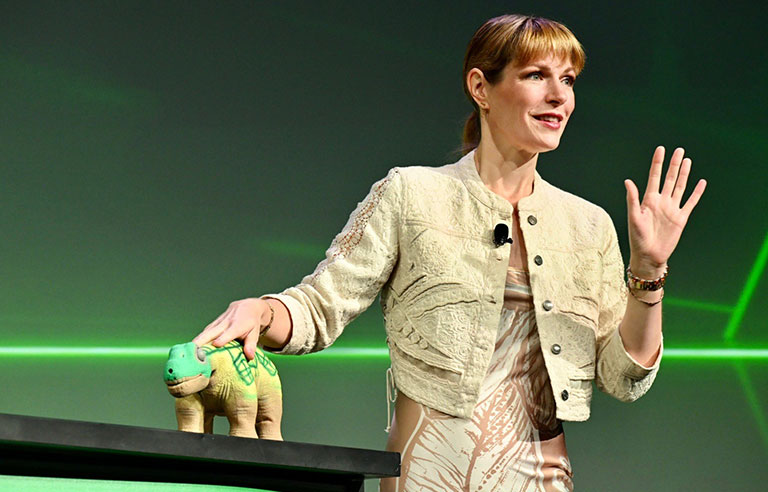‘Technology that helps people do a better job’: Closing Keynote focuses on human-robot interaction

Orlando, FL — Start seeing robots as collaborators, not competitors, and nix the notion of comparing them with people.
With assistance from demonstrations, anecdotes and videos, Kate Darling delivered that perspective during Wednesday’s Closing Keynote at the 2024 NSC Safety Congress & Expo. She also assured safety professionals they’re ahead of the curve.
Darling, an expert in social robotics and a research scientist at the Massachusetts Institute for Technology, asserted that “we could be investing in technology that helps people do a better job rather than trying to automate people away.” She then turned to the audience and said: “I know that a lot of technology in your industry is actually trying to do that, and that absolutely is what we need to be leaning into.”
She explored the concept of anthropomorphism – assigning human or personal characteristics to an object, or humanization – throughout her presentation.
The practice remains widespread as artificial intelligence and robotics become increasingly common in workplaces and society.
Darling cited the statistic that more than 80% of Roomba vacuum cleaner owners name the appliance. She showed a 2015 video clip of a man kicking a robotic dog and noted that People for the Ethical Treatment of Animals – an animal rights organization – received requests from the public to intervene.

Waking and playfully dangling the tail of her lifelike pet PLEO robot dinosaur, “Mr. Spaghetti,” Darling explained that anthropomorphism is natural and common. However, she cautioned that extending certain thoughts to the world of work at large might be counterproductive.
“Using a different analogy than this human comparison really helps open our minds to other ways and other opportunities to use this technology and helps challenge this constant assumption that it can, will or should replace people,” Darling said.
One example of technology helped Darling illustrate how someone might change their perspective.
The PARO therapeutic robot, often seen as a baby seal, is used at nursing facilities and intended to soothe and stimulate patients with dementia or other cognition disorders.
Although someone might view the technology as replacing human care, Darling considers it an alternative to animal therapy that might be unavailable for safety, hygiene or other reasons.
“I truly believe that the potential of these modern technologies – artificial intelligence and robotics – is not to recreate something we already have,” she said. “It’s for us to partner with these systems in what we’re trying to achieve.”
Post a comment to this article
Safety+Health welcomes comments that promote respectful dialogue. Please stay on topic. Comments that contain personal attacks, profanity or abusive language – or those aggressively promoting products or services – will be removed. We reserve the right to determine which comments violate our comment policy. (Anonymous comments are welcome; merely skip the “name” field in the comment box. An email address is required but will not be included with your comment.)

